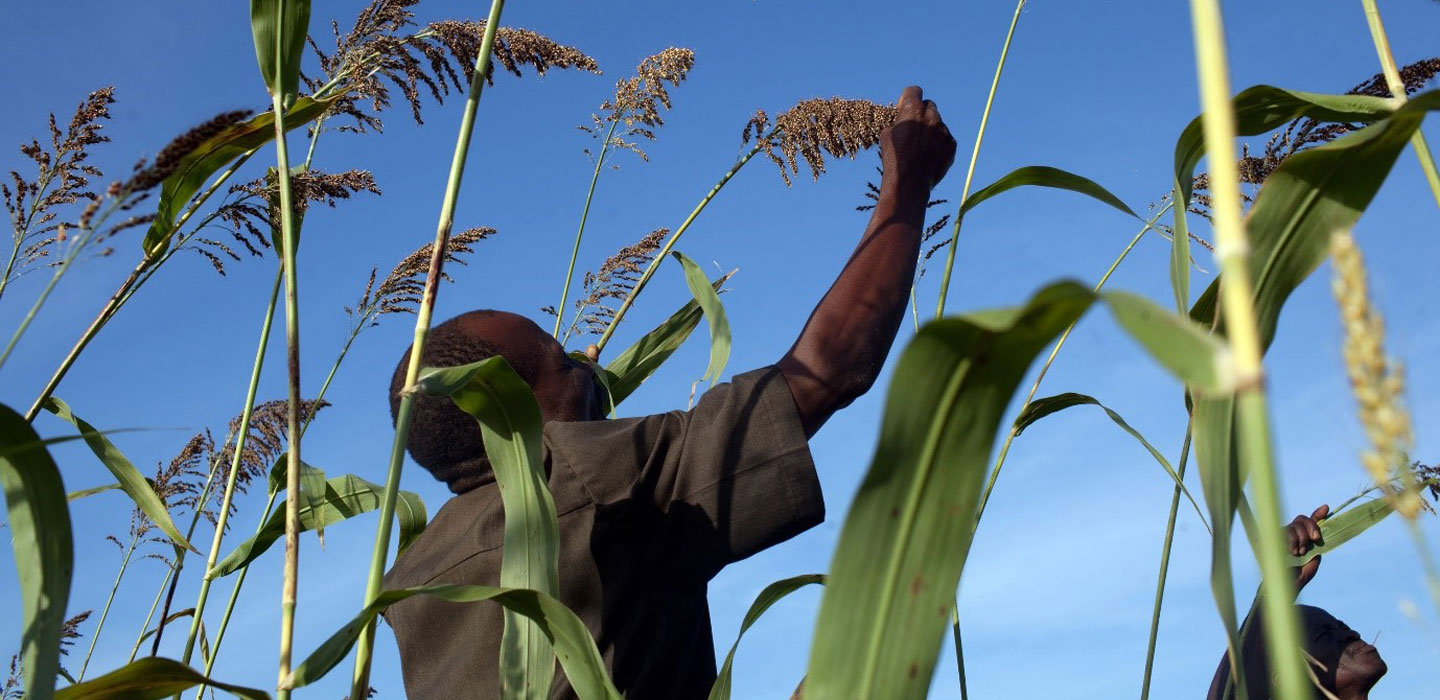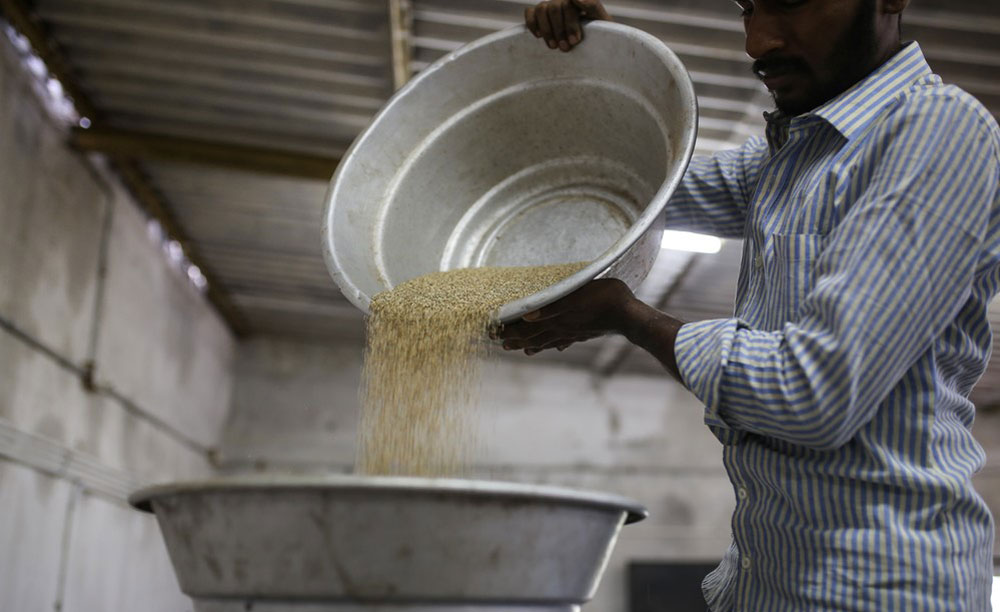As temperatures rise, so too does our need for diverse crops
IFAD Asset Request Portlet
Asset Publisher
As temperatures rise, so too does our need for diverse crops
Estimated reading time: 3 minutes
Drought is the number one cause of agricultural production loss. With our planet warming, arid regions are becoming drier and entire communities are being devastated.
At the same time, the world relies on a limited number of crops – rice, wheat and maize. This means that food systems are highly vulnerable to extreme natural events, especially droughts. And for rural people, whose livelihoods depend largely on farming, the stakes are even higher.
But it doesn't have to be this way. IFAD supports small-scale farmers as they grow more resilient crops, like sorghum and fonio, so that they can feed themselves—and the world—even during periods of drought.
And over the years, through our Recipes for Change series, we have helped to build awareness of these important crops in a bid to make them popular again.
Kenya: The sturdy sorghum
Despite heavy rainfall earlier this year, Kenya is still reeling from the effects of four successive failed rainy seasons and the country’s worst drought in four decades. A catastrophe for rural communities who rely on rain-fed agriculture. Sturdier crops, like the short-stemmed sorghum, could be the solution.
Known for its nutritional benefits, this ancient grain has been around for thousands of years thanks to its ability to grow in harsh conditions, including Kenya’s vast arid and semi-arid lands.
After a series of failed rainy seasons, Joyce Muthangya’s water-intensive maize withered beneath the unrelenting sun, leaving her without food to eat or sell. With support from IFAD, she started growing sorghum. Now she can feed her family and has enough left over to sell for a profit, even with sporadic rainfall.
Another sorghum enthusiast is Chef Ali Said Mandhry. “The trick will be convincing the youth, especially in the cities, that sorghum is the future,” he says. “Less water, cheaper, more recipes and more nutritious. What we need, what I will be doing, is trying to promote new recipes that use sorghum.”
Mali: The formidable fonio
 |
| Drought-resistant crops like sorghum and fonio are more important than ever. © FAO/Swiatoslaw Wojtkowiak |
With climate change becoming more extreme, drought-resistant crops with short growth cycles are becoming increasingly important for food security. One such crop is West Africa’s fonio.
Once regarded as the food of royalty, this nutritious grain can thrive even in infertile soils, while its short growth cycle means it is more likely to make it to harvest unscathed.
An IFAD-supported project in Mali is working with local communities to revitalize ancient food systems and promote resilient livelihood practices.
Recipes for Change Chef Pierre Thiam understands the importance of fonio in our ever-changing world. For years, he has worked to bring this grain back to its former glory and pave the way for small-scale farmers in West Africa to market and sell this sustainable crop across the world.
South Asia: The marvellous millet
 |
| Millet is more nutritious than rice and far more resilient to drought. © IFAD/Dhiraj Singh |
Once upon a time, millets could be found in most households across South Asia. But, over the last five decades, they have been replaced with more lucrative cash crops, like rice.
Not only is this food grain more nutritious than rice, it’s also far more resilient to drought. Indigenous communities know this and have been making use of millets for centuries, not just as food but also for medicinal purposes.
In Bhutan, farmer Thukten Wangmo says she prefers millet because it is more versatile than any other crop she has grown in the past. “We can make dough, porridge, use it to brew alcohol and as fodder for cattle,” she says.
Italian Chef Carlo Cracco saw this for himself when he learnt how to make millet momos with Thukten and witnessed how she was rediscovering traditional crops and adapting to climate change.
“They try to use the land in a good and healthy way,” explains the chef. “They also vary their ingredients, so they always have something to fall back on.”
These formidable crops have immense untapped potential to provide us with safer food systems. As our planet continues to warm and droughts become more frequent, we need to continue investing in foods that will grow and thrive under the toughest of circumstances.
Recipes for Change
Publication date: 18 July 2023